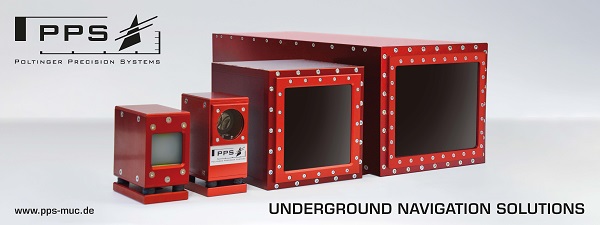- Pages
- Robin McAuley
- Tunnel Boring Machine (TBM) Cutter Head Y-Parts: A guide to buying TBM Cutters and Cutter Support...
- Buying Advice for Bichak-Cutters
Buying Advice for Bichak-Cutters: Revision
WARNING UNDER CONSTRUCTION.
Bichak Cutters ("knives" or "scrapers") are cutters used for boring in soft to medium ground. Basically they are metal blocks often with tungsten-carbide bits (like sort of "teeth") on the edges which do the digging.
Different TBM manufacturers use different names like "Knives" or "Scrapers" for Bichak Cutters. They come in different designs. Design differs depending on the TBM model and/or the placement position of the bichak cutter on the cutter head.
Hardfacing welding: In addition to the tungsten-carbide bits which do the active digging, bichak cutters also have hardfacing welding on the surfaces which are most likely to have contact with the excavated material. Such hard-facing not only protects the bichak part from secondary impact, but also protects the canals in which the tungsten-carbide bits are fitted (otherwise the bits will fall off - thlnk of the tungsten-carbide bits like the teeth in your mouth. If the gum around your teeth are very weak, then your teeth will fall off...)
Your check-list before ordering Bicak cutters
You can eliminate a lot of the potential problems for later by doing your homework during the selection process before actually ordering the product.
BC-1 Your Product Specification
Ask the producer if they have produced before the bichak-knives for your TBM brand and model. You are basically asking them if they have the drawings/design and the production experience compatible with your TBM brand/model. It is the best if they already did.
Even they did not, a typical producer will send someone to take the measurements of your TBM's Cutter Head and will propose you their design for the Bichak-cutter. You will have no problems with a good producer, but you'd better choose a producer which has already produced your bichak-cutters before.
It is important to note that, even if the producer has experience with the bichak-cutters of your TBM brand/model, they may still need to come and take measurements on your cutter head. This is because that the TBM manufacturers often change the binding parts of the bichak-cutters keeping the rest of the design intact. Some say, the TBM manufacturers do such changes to make life difficult for the independent Y-parts producers.
BC-2 What are their reference sites?
Just because a manufacturer is good in producing Disc Cutters, do not assume that they are also good in Bichak Cutters. Bichak Cutters require welding and soldering and it is a whole different game.
Therefore, ask the producer their reference sites. Which tunnel construction sites have they delivered to? Make sure that you are getting a reference list with project name, company name and at least one contact person and telephone number per project. Do not forget to call that reference person and check.
BC-3 What is the composition of the steel alloy used?
Alloy steel is steel that is alloyed with a variety of elements to improve its mechanical properties. Strictly speaking, every steel is an alloy, but not all steels are called "alloy steels". The simplest steels are iron (Fe) alloyed with carbon (C) (about 0.1% to 1%, depending on type). However, the term "alloy steel" is the standard term referring to steels with other alloying elements added deliberately in addition to the carbon. Common alloyants include manganese (the most common one), nickel, chromium, molybdenum, vanadium, silicon, and boron. Less common alloyants include aluminium, cobalt, copper, cerium, niobium, titanium, tungsten, tin, zinc, lead, and zirconium.
TBD: Alloy properties best in this specific case.
BC-4 How do they check the steel quality?
The metal block of the Bichak-cutter is often a metal casting. Casting is a manufacturing process in which a liquid material is poured into a mold, which contains a hollow cavity of the shape, and then allowed to solidify. A good casting must not have any cracks or gaps in it. Cracks occur when the solidification process is not followed correctly or at a later stage during the heat treatment. The gap (or cavities) form when air gets trapped in the mold during the casting process. Those gaps and cracks weaken the metal and can cause the bichak-cutter to disintegrate into pieces during the boring operation. The bottom line is; the quality of the casting is very important.
If your producer has proper suppliers and production processes in place, such cracks and gaps will not form during the casting process, during the heat treatment process or during welding. Even if they slip through good manufacturing processes, their quality control processes will catch them, if they have good quality processes in place...
BC-4 What is the metal hardness?
Normally the body of the bicak-cutter need not be too hard because its sides which are coming in contact with the "wall" will already have been fortified with tungsten-carbide bits or hardfacing welding. Hence there is no need for the rest of the body to be too hard (read: TBD what you should know about hardness).
TBD: What is the optimum hardness
BC-4 What is the composition of the Tungsten-Carbide bits?
TBD
BC-5 What is the hardness of the Tungsten-Carbide bits?
TBD
BC-6 Which method are they using to fit the Tungsten-Carbide bits to the steel body?
Important to note that, you cannot weld the bits to the steel body (please read Differences between welding and soldering). Instead soldering is used for fitting the bits to the canals in the steel body. There are different sorts of soldering. Which one are they using?
Are they using soldering or brazing? See: TBD
BC-7 What is the hardness of the Hardfacing welding?
BC-8 What covering (oiling/painting etc) do they use?
Often producers cover their end-products with oil or paint before the delivery. This makes the product look nice and also prevents it from rusting. Both of these are actually not very important because nobody cares how it looks as long as it functions and very often the product will be used within a few months of the delivery, hence any surface rust will go away in the first centimeters of the operation anyway (provided that the producer did not deliver you a product which had been deeply rusting away for months in a warehouse).
Insist that the product is not painted to cover the visibility of the metal. This is very important. If it is painted with a thick layer of paint, this will prevent you from visually inspecting the quality of the products. You will not be able to see if the tungsten-carbide bits are properly soldered into the body, of if there are any cracks on the body because of the heat treatment or if there are cracks on the hardfacing welding.
Good producers often do not paint their products and instead they only cover them with a thick layer of oil. This is also what the informed buyers prefer. In the worst case (especially with big-name providers who insist on their "company branding"), at least insist on a transparent and thin layer of paint. Your quality control people will really appreciate it during their visual checks.
BC-9 Quality Control Procedures
What are the certifications of their welders, solderers?
Ask the producers for some information about their quality control processes. Like, how do they check the bichak cutter body against gaps in the metal or cracks? How do they check the quality of their soldering and welding?
History
Buying Advice for Bichak-Cutters
Revision created by Robin McAuleyBuying Advice for Bichak-Cutters
Revision created by Robin McAuleyBuying Advice for Bichak-Cutters
Revision created by Robin McAuleyBuying Advice for Bichak-Cutters
Revision created by Robin McAuleyBuying Advice for Bichak-Cutters
Revision created by Robin McAuleyBuying Advice for Bichak-Cutters
Revision created by Robin McAuleyBuying Advice for Bichak-Cutters
Revision created by Robin McAuleyBuying Advice for Bichak-Cutters
Revision created by Robin McAuleyBuying Advice for Bichak-Cutters
Revision created by Robin McAuleyBuying Advice for Bichak-Cutters
Revision created by Robin McAuleyBuying Advice for Bichak-Cutters
Revision created by Robin McAuleyBuying Advice for Bichak-Cutters
Revision created by Robin McAuley
cover tunnel photo by: Matt Brown from London, England / CC BY
Copyright 2019-2024 TunnelContact.com








